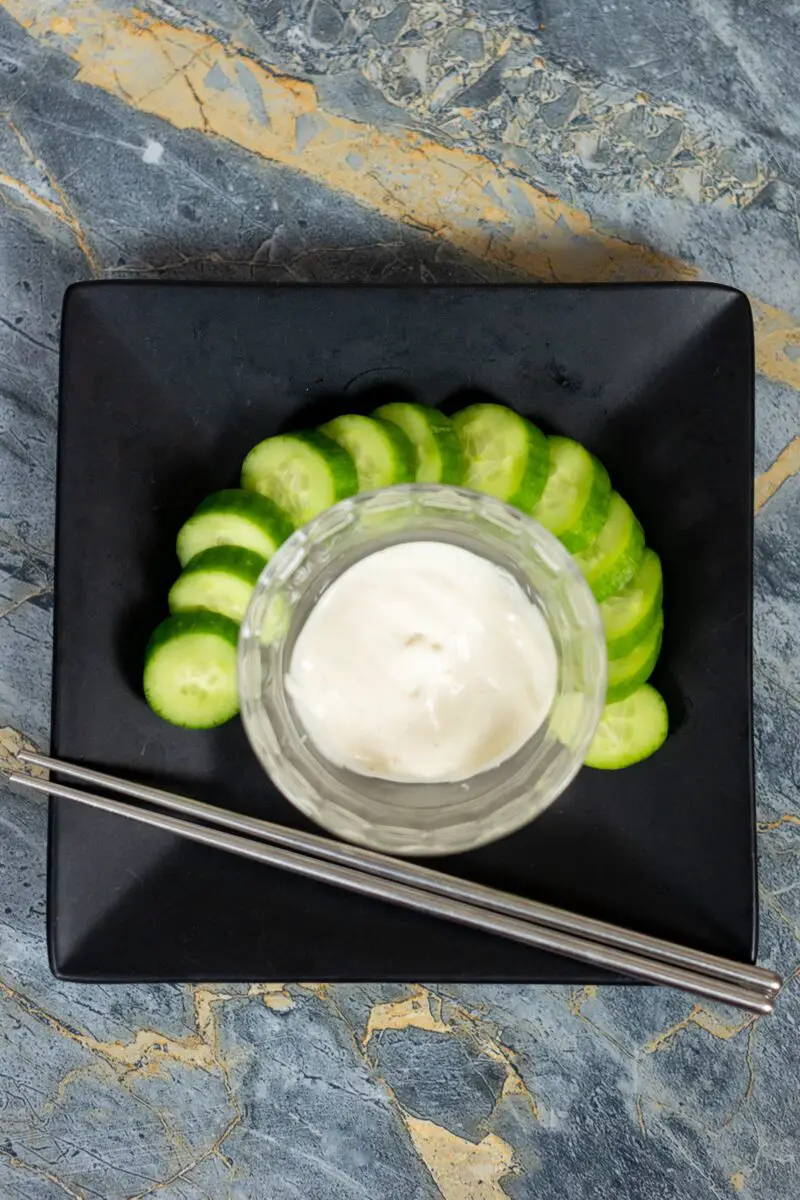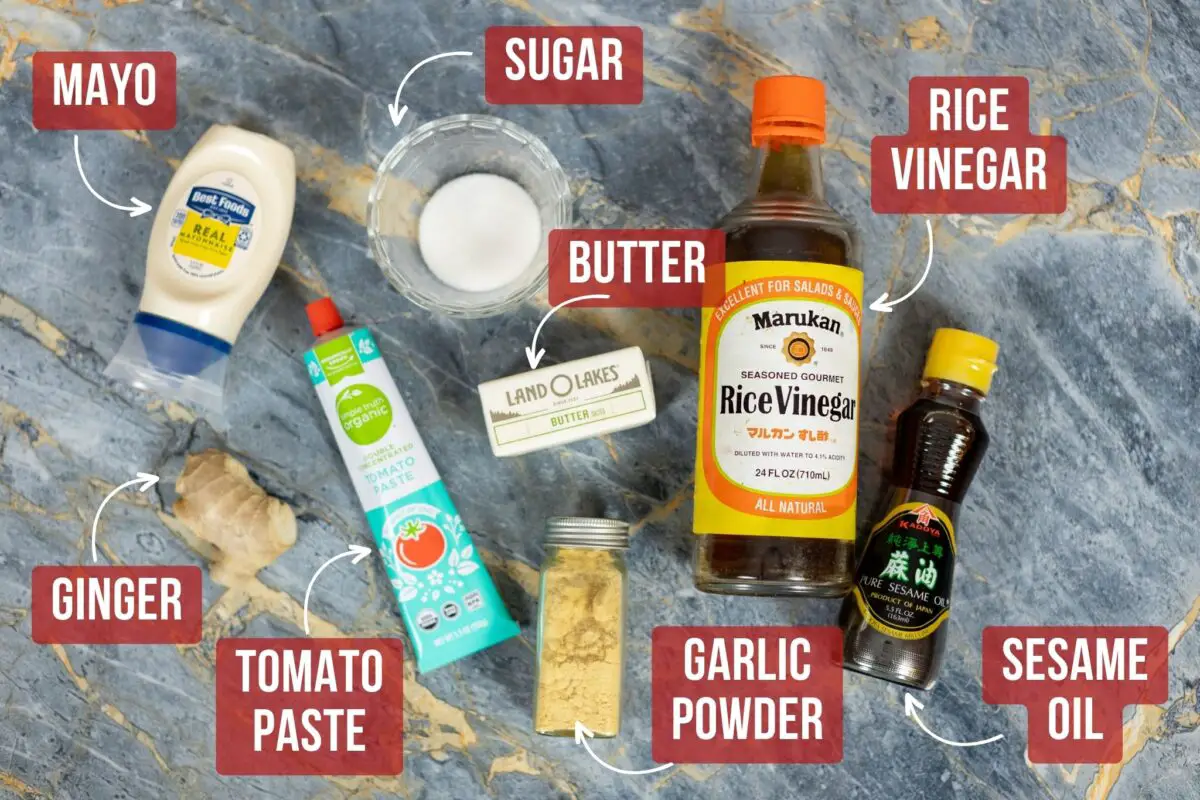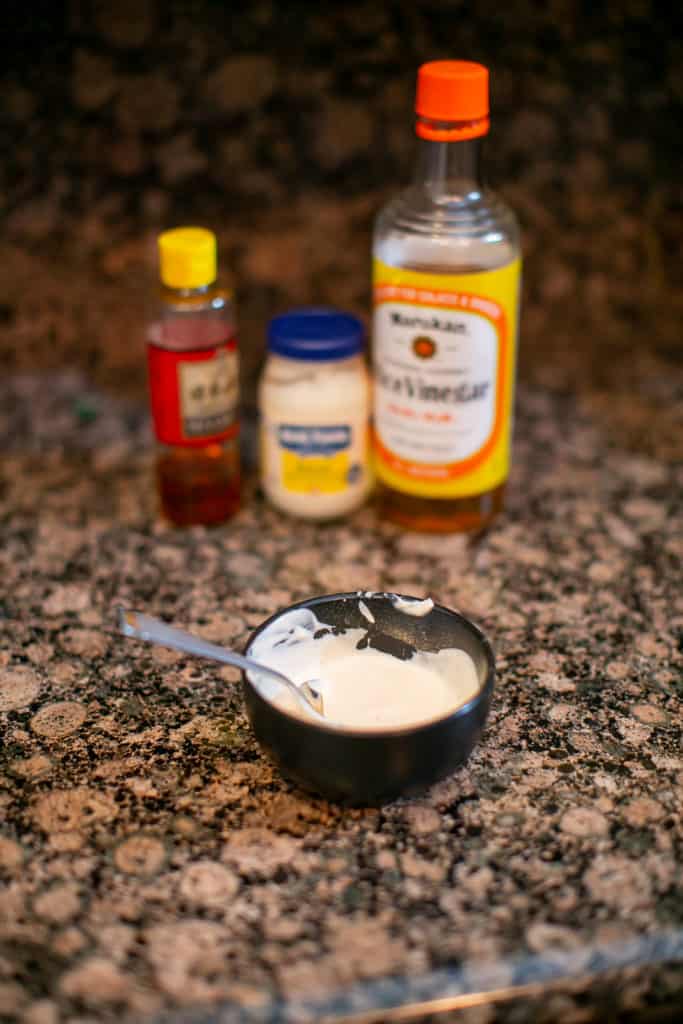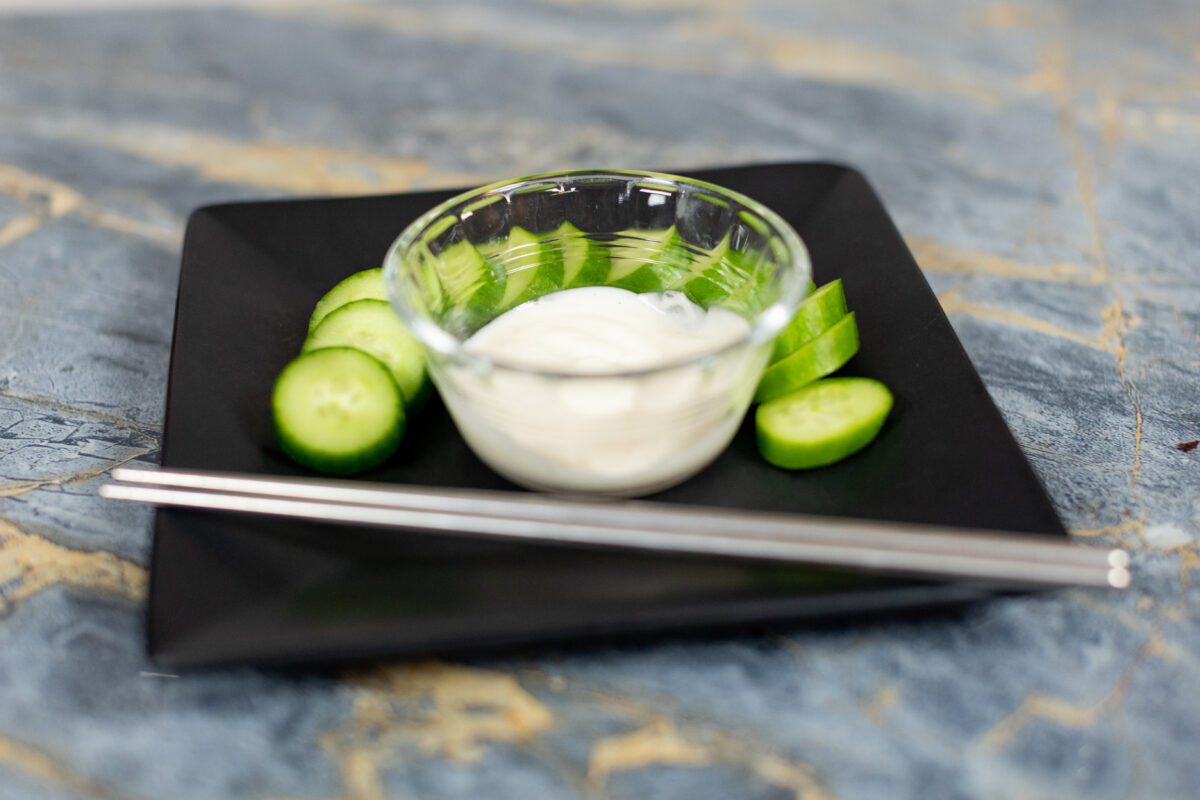As an Amazon Associate we earn from qualifying purchases.
Today I’ll be making a simple Japanese white sauce. Before I dive in, let’s get one thing straight. This sauce is far from what you’d call authentically Japanese. Traditionally, the thing I love about Japanese food is its minimalistic approach to flavors and ingredients. Most traditional dishes are made from a few ingredients with nothing to hide behind.
Sauces, in particular, are not too common in Japan, especially ones made of many ingredients. All that said, there is no hard and fast rule regarding more modern Americanized and fusion interpretations of Japanese cuisine. Being of Japanese descent, I like to think of the dual nature of Japanese cuisine like this.
Quick Navigation
Why I’m Making a Japanese White Sauce
My Japanese white sauce recipe is based on the white sauce given to patrons of teppanyaki style restaurants (such as Benihana where they cook food on a big flat iron grill in front of you). The servers might say the sauce is just for meat or just for vegetables (depending on where you go), but the reality is it goes well on everything.

You might also have heard Japanese white sauce referred to as “yum yum sauce.” I’ve asked teppanyaki restaurants why it’s commonly referred to this way, and they’ve shared that it’s because when you try the sauce, you say “yum!” I don’t know if that’s the real reason for the name, but I thought it was clever.
Based on it being a popular sauce at certain restaurants, I thought it’d be fun to recreate it at home to have on hand for certain dishes.
Ingredients
Making the sauce is very easy. You just need a dish to mix everything into and some measuring spoons. Once you make this a few times, you will probably be able to eyeball the ingredients, allowing you to forego using measuring spoons. Here are the ingredients needed:

- Mayonnaise is going to be the base of this sauce. Mayonnaise is an emulsifier which is great for this sauce since it’s composed of fat, water, and seasoning. Effectively, I am going to expand the mayo’s flavor and texture profile.
- Tomato paste is where the majority of my body and umami flavor is going to come from without diluting my texture or flavor. There isn’t a great direct substitute for tomato paste if you don’t have it. While it is possible to substitute in other pastes or sauces, they will ultimately result in a different final product than white sauce.
- Ginger is the cornerstone aromatic in this sauce. Be sure to chop it as finely as possible to ensure the flavor spreads evenly and fully into the sauce.
- Garlic powder is better to use than fresh garlic. Garlic powder is way milder in flavor, and I use it as a mild thickening agent for texture.
- Sesame oil will bring a ton of aromatic qualities to your sauce as well as a rounded body and mouthfeel. Make sure you use a good quality toasted sesame sauce for the best results.
- Rice vinegar will be the acidic factor in my sauce. This becomes even more critical if you use an alternative to mayo, as the tang on the vegan options isn’t the same as real mayo.
- Water manages the consistency and potency of the sauce. If you are using dried ingredients and powders, more water will be needed than when using fresh, as a portion of the water is being absorbed to rehydrate the powders.
- Melted butter allows it to mix and coat the seasonings and mingle with the fat from the mayo and oil. It also adds flavor to the recipe.
- Sugar serves two purposes: first, it balances the acidity of the vinegar. Second, it increases palatability. Sugar is one of the foods that begins metabolizing immediately the second it hits your mouth, so it not only rounds out the flavor profile, but like the butter, it enhances the experience as you eat it.
Recipe Instructions for Japanese White Sauce
Step 1: Melt Butter
Place your butter into the microwave in a microwave safe container for 15-second intervals until it’s melted. Your butter does not need to be scalding hot – just warm enough so it’s melted.
Step 2: Combine Ingredients
Once your butter is melted, combine all ingredients into a bowl.
Step 3: Stir Ingredients
Using a spoon, stir all the ingredients together until they are blended. Your sauce should have a smooth consistency and not be chunky at all.

Step 4: Cool Sauce
This sauce is best at a cooler temperature, so I recommend letting it set and cool down in the fridge for about an hour before using it. Past that, you’re ready to enjoy it on top of your food!
Substitutions in the Recipe
Here are some substitutions you can use in this recipe:
- Vegan mayonnaise: If you are looking for a vegan-friendly option, avocado mayo makes a great substitute for your white sauce base. Keep in mind though, it won’t be quite as white, as avocado mayonnaise has a slightly green/yellow tint.
- Ginger paste and powder: If you do not have fresh ginger, your next best option is ginger paste. If you need a fallback, you can use ginger powder which has a similar taste and smell but no bite to it. As far as final consistency goes, your sauce will be thickest with ginger power, then ginger paste, and finally, the real ginger.
- Chili sesame oil: Even though white sauce is not normally spicy, if you want to add a little heat, you can use chili sesame oil and a dash of cayenne powder to the mix in place of the normal sesame oil.
- Sherry and white wine vinegar: If you don’t have access to rice vinegar, you could try to use sherry or white wine vinegar. The end result is slightly less East-Asian and a bit more European in flavor.

Japanese White Sauce Tips
Here are some tips to consider when making this sauce:
- Good Japanese white sauce should be rich, not too thick, and just a tad sweet. As I stated above, you want this sauce to go on basically anything you could find in a teppanyaki restaurant. That means it should go on steak, shrimp, zucchini, onion, fried rice, and so on.
- When possible, use garlic powder rather than fresh garlic. Fresh garlic gets more sulfurous as you break it down into smaller pieces. So, if you use finely chopped fresh garlic, your sauce will be hot, pungent, and vaguely Italian tasting.
- The trick with using melted butter in a cold sauce is that it allows the butter to mix and coat the other ingredients. As the sauce cools, the butter and the fat globules start to reform a little (not entirely due to the water content), and that butter mesh turns into little flavor bomb packets. If you want a vegan option, you can use any room-temperature solid fat (coconut oil, vegetable spreads, etc).
Related Questions
Is White Sauce Considered Hibachi Sauce?
The most common place I see Japanese white sauce is in Hibachi restaurants, so the association between the two is very strong.
While Hibachi grilling may have popularized the sauce to Western audiences, many enjoy white sauce as an aioli or ranch alternative for dipping and drizzling rather than just for grilled foods.
Is Yum Yum Sauce Just Japanese Mayo?
Yum Yum, or Japanese White sauce, is not the same as Japanese Mayo. Japanese mayo is just mayo, egg yolk, and sometimes some added sugar. Yum Yum sauce tends to have additional ingredients like tomato paste, ketchup, vinegar, garlic, and ginger.

Ingredients
- 3 tablespoons mayo
- 1/2 teaspoon tomato paste
- 1/2 teaspoon ginger finely chopped
- 1/2 teaspoon garlic powder
- 1/4 teaspoon sesame oil
- 1 teaspoon rice vinegar
- 1/2 tablespoon water
- 1/3 tablespoon melted butter
- 1/4 teaspoon sugar
Instructions
- Put butter into microwave in 15 second intervals until melted
- Combine all ingredients in a bowl
- Stir well until blended
- Cool for 1 hour in fridge
- Serve on top of food
Notes
- Good Japanese white sauce should be rich, not too thick, and just a tad sweet. You want this sauce to go on basically anything you could find in a teppanyaki restaurant. That means it should go on steak, shrimp, zucchini, onion, fried rice, and so on.
- When possible, use garlic powder rather than fresh garlic. Fresh garlic gets more sulfurous as you break it down into smaller pieces. So, if you use finely chopped fresh garlic, your sauce will be hot, pungent, and vaguely Italian tasting.
- The trick with using melted butter in a cold sauce is that it allows the butter to mix and coat the other ingredients. If you want a vegan option, you can use any room-temperature solid fat (coconut oil, vegetable spreads, etc).
